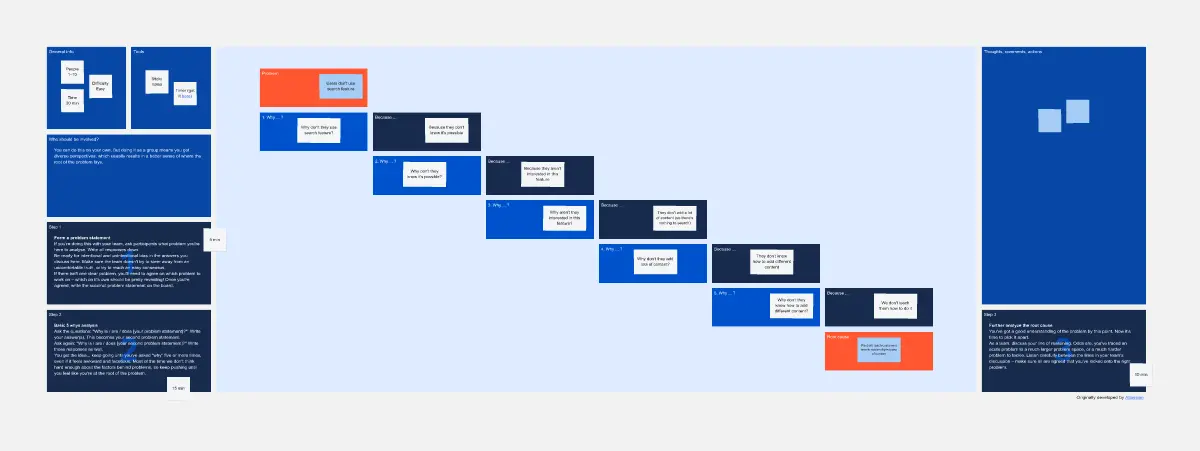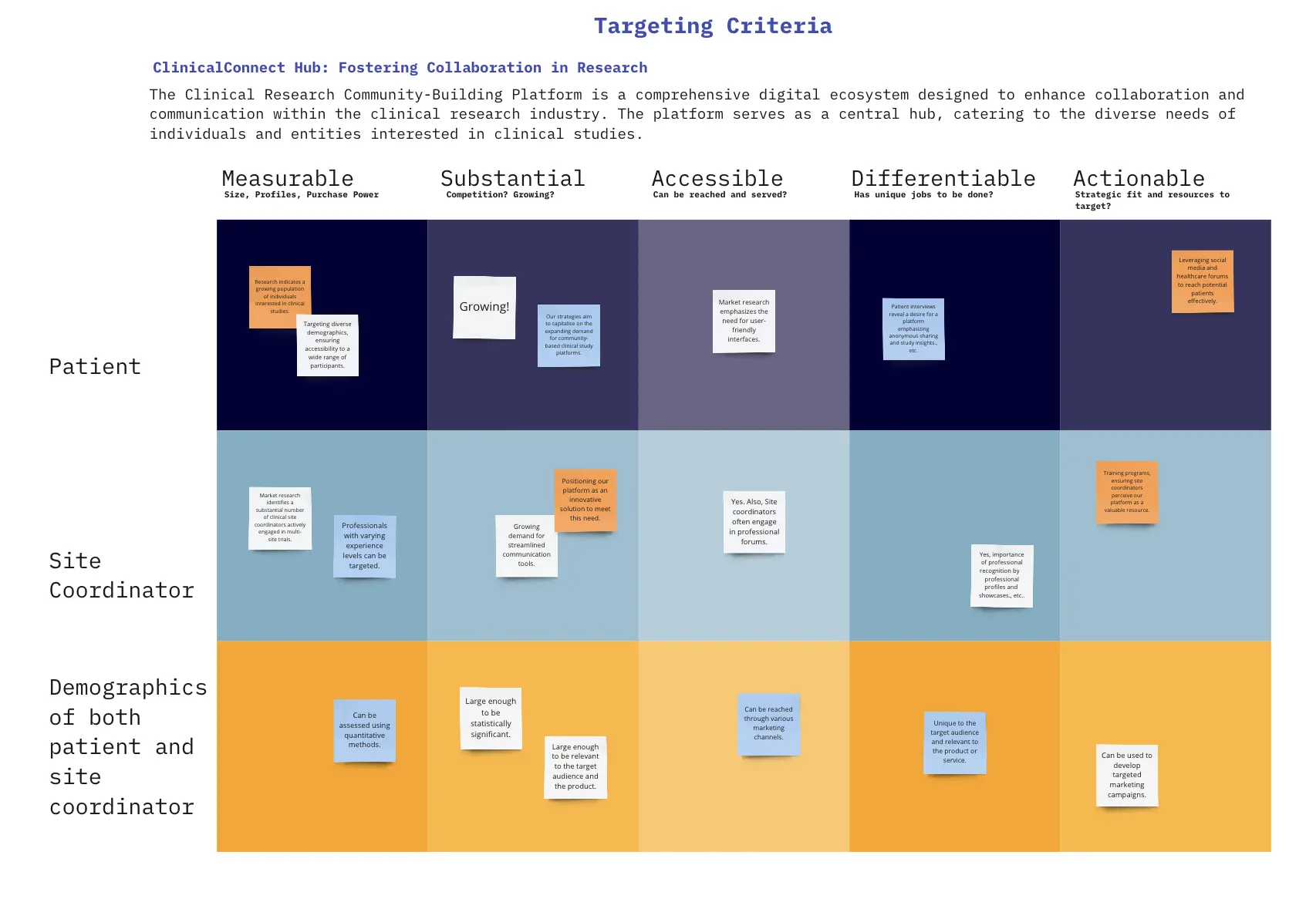By using this framework, the Clinical Research Community-Building Platform achieves a more personalized and localized approach, enhancing the overall experience for both patients and site coordinators. The tailored strategies contribute to increased user satisfaction, engagement, and the platform's effectiveness in supporting clinical research activities.
How to Use the Market Segmentation Matrix Framework
Step 1: Define Segmentation Criteria
Begin by clarifying the criteria based on which you plan to segment your market. This could be based on things like age, interests, or how they behave.
Step 2: Collect Market Data
Gather data related to your defined segmentation criteria. This can involve market research, surveys, or any available information that provides insights into the characteristics of your target audience.
Step 3: Create the Matrix
Construct a matrix with the identified segmentation criteria as columns and individual market segments as rows. This matrix will serve as a visual representation of how each segment aligns with the specified criteria.
Step 4: Populate the Matrix
Based on the collected data, populate the matrix by placing each market segment in the corresponding cells. This helps visualize the distribution of segments across different criteria, identifying patterns and trends.
Step 5: Analyze Segment Characteristics
Examine the characteristics of each market segment within the matrix. Identify commonalities, differences, and potential opportunities or challenges associated with each segment. This analysis will guide your understanding of the diverse needs and preferences within the market.
Step 6: Prioritize Segments
Consider the strategic importance of each market segment. Prioritize segments that align closely with your project's goals, objectives, and resources. This step helps in focusing efforts on the segments that offer the greatest potential for success.
Step 7: Develop Targeted Strategies
Tailor marketing and engagement strategies for each prioritized market segment. Leverage the insights gained from the matrix to create customized approaches that resonate with the unique characteristics and preferences of each segment.
Step 8: Monitor and Adjust
Regularly revisit the matrix as market conditions evolve. Monitor the effectiveness of your strategies and be prepared to make adjustments based on changing trends or new insights. This iterative process ensures ongoing alignment with the dynamic nature of the market.






